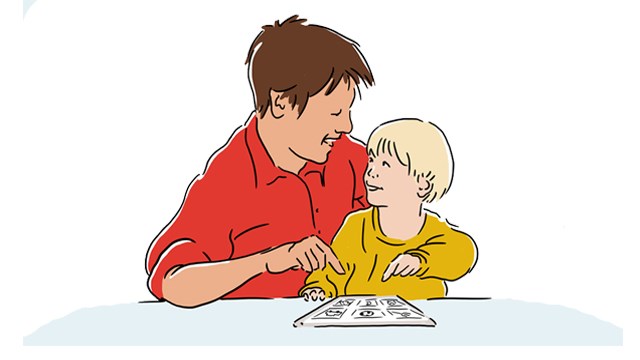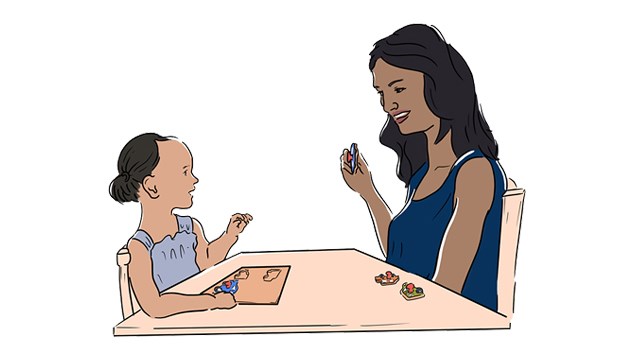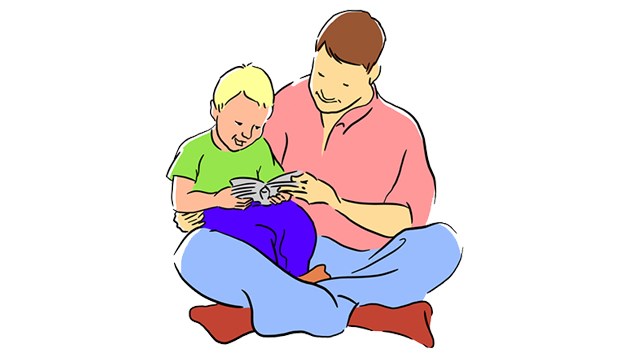Den här webbplatsen använder cookies, som samlar information om hur du interagerar med sidan. I kombination med de uppgifter du uppger, skapar vi en profil så att vi ska kunna visa relevant innehåll just för dig. Genom att acceptera tillåter du att vi samlar och behandlar dina personuppgifter enligt beskrivningen.
Handling everyday routines
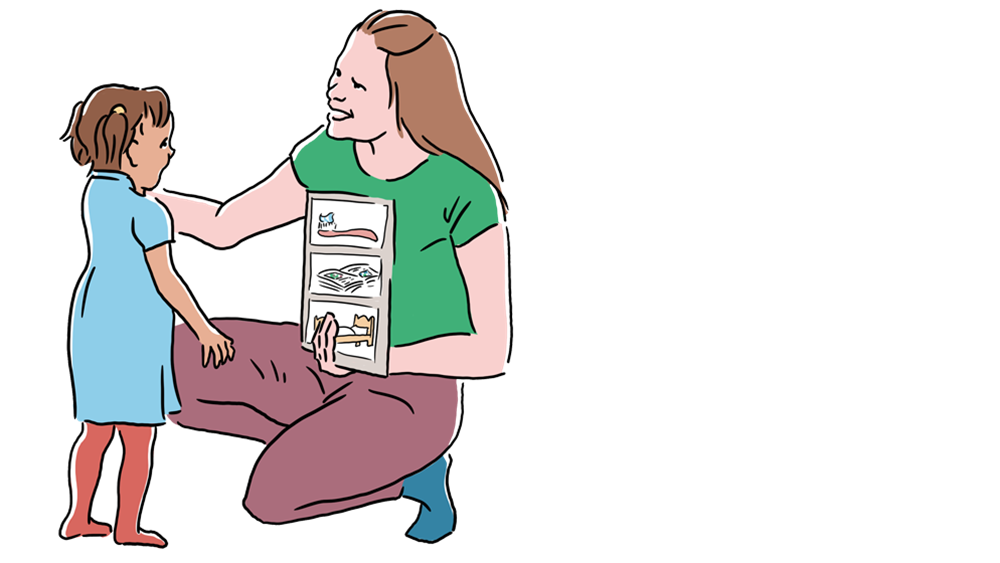
Making everyday routines run smoothly can be difficult when you have young children. Bedtimes and mealtimes can be tough, and it is sometimes hard to leave on time for kindergarten. The key to getting everyday routines to work is for you, as the adult, to establish fixed procedures. Start by thinking about how you want the bedtime or morning routine to run. If you do things the same way every time, you child will get used to the routine – which will then run more smoothly.
Go to the preschool
Bedtime routines
Prepare your child
We all feel more confident if we know what to expect so that we can get ready for it. Young children themselves are not aware of what is going to happen, or when. For example, they do not know which days of the week they go to kindergarten, and which days they stay home. This means that children often experience things as happening suddenly and unexpectedly. Children can also start to think that you are going to do something you are not actually going to do. If you usually drive your child to kindergarten, he/she may think you are to going the kindergarten every time you get in the car. Your child can then become unhappy or uneasy when he/she realizes that you are actually going somewhere else. This can be a bad experience, even if it is a place your child enjoys. For routines to run smoothly, it is therefore important for adults to prepare children properly so they know what is happening.
Young children may also need help to finish what they are doing before they can start something else. For example, if you have explained to your child that you are both going out, you may need to help him/her finish his/her activity before you can start putting on your overclothes.
Prepare with pictures
One good way to help young children get ready is to show them pictures of what you will be doing. Young children find pictures easier than words to understand and remember.
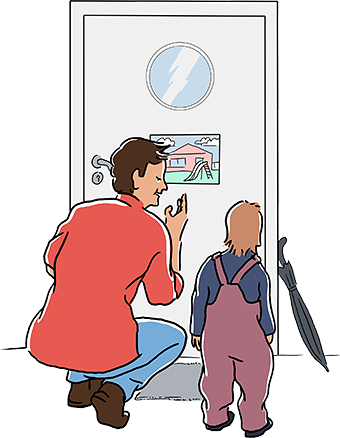
If you show your child a picture of the kindergarten before you leave, he/she will know where you are going. This will reduce the risk of him/her thinking you are going to the shops – and then becoming upset when you go somewhere else. You can use pictures in your smartphone or print them out. Visit the website www.bildstod.se to create picture-based material that you can use to help your child get ready.
Prepare with a picture chart
You can use a picture chart to help get your child ready for the activities he/she will be doing, and in what order. For example, you can use a chart like this to help your child get ready for bed.
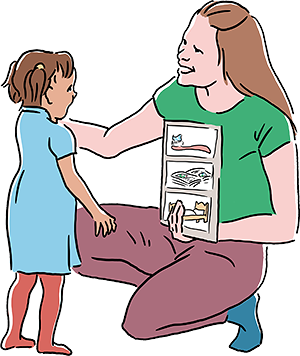
Picture charts make it easier for children to understand the whole routine. You can also use charts as checklists during the different activities. You can have your child remove the picture of the activity you have finished, and then take the initiative to start the next step in the routine.
Prepare with “first – then”
To increase your child’s motivation, you can use a picture chart for a “first – then” approach.
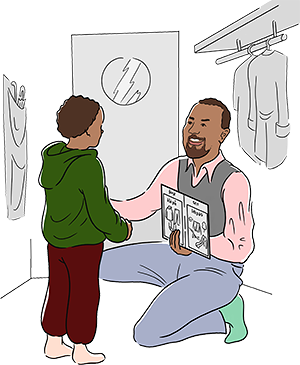
If your child finds it tough to put on his/her overclothes, you can use pictures to remind him/her that you will be doing something fun together once you have put your overclothes on. First we put our overclothes on – then we go to the playground. The picture you use for “then” must be something your child really enjoys.
Prepare with video clips
Another way to help your child get ready and to increase his/her motivation is to show him/her a video of what you will be doing. If your child does not want to go to the playground, a short video showing children playing on the swings together can increase your child’s desire to go. It can also be fun to watch the videos together with your child and talk about them.
Make your child more involved
We all find it more fun to take part in an activity if we feel involved in it. If you help your child become more involved in the routines, you will make him/her more motivated compared to a situation where he/she simply “follows your lead”.
Let your child choose
A simple way to increase your child’s involvement is to give him/her the chance to choose. It is often enough to let your child make small decisions to increase his/her motivation.
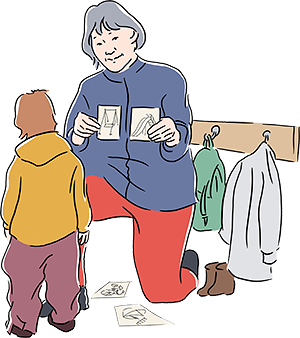
For example, in the morning you can let your child choose his/her cap, or whether you should take the lift or use the stairs. And when it is time for bed, you can let your child choose between different toothpastes, or which book you read together. It is important to make the choice clear to your child. A good idea is to hold up the things your child can choose between, or show him or her pictures of them.
Give your child a task
Another way to make your child more involved is to give him/her a task to do. Children think it is fun to do tasks, and they feel special when you ask them to help. For example, you can ask your child to wipe the table after dinner, to throw his/her diaper in the bin, or to turn off the light. If you are out shopping, you can have your child put your purchases in the trolley, place them on the conveyor belt, or hold the receipt.
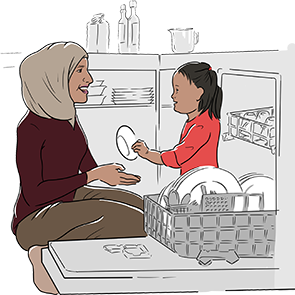
When we give children small tasks to perform, there is also less risk that they will start doing something we do not want them to do. If you ask your child to help you put your purchases in the shopping bags, for example, there is less risk that he/she will run away or start to pick up other things.
Adapt the level of requirements
Children learn from doing things correctly. So to make sure your child can learn the routines, it is important that you help him/her succeed. Ask your child to do sufficiently difficult things and help out when necessary. If your child is not doing what you asked him/her to, it is a good idea to ask yourself why. Is it not sufficiently clear what you want your child to do? Is it too difficult? Or is your child simply not motivated to do it?
Can children actually do what we ask them to?
Simple tasks can be more difficult for children than we think. If you ask your child to put on his/her overclothes, it is not just a question of your child being able to put on his/her coat. He or she also needs to understand what you are saying, to finish his/her game, and not to be distracted on his/her way out into the hall. He/she also needs to know what item of clothing to put on first. When a child is unable to carry out a task, it is probably because it is too difficult for him/her. Think about making the tasks clearer and easier. To do this, make sure to give clear instructions – using pictures if necessary – or help your child with the tricky parts of the task so that he/she succeeds and wants to do it again.
It is also important to remember that children can do more or less at different times. If your child is tired, hungry, angry or upset, he/she will be able to do less on his/her own. When your child is in a new environment or in a place with a lot of noise and movement, he/she will often need more help than otherwise.
Is it an important rule?
As an adult, your task is to raise and educate your child. This often translates into making a lot of demands. Too many demands, however, can easily result in conflict if the child does not do what the adult says. In order to reduce potential conflicts, it is therefore a good idea to think about which rules are most important. When you ask your child to stop doing something, it is also important to explain to your child what he/she should do instead. For example, if your child is being too rough with a pet, it is important that you do not simply say “stop”, but also show your child how to stroke the pet gently.
De-escalate conflicts
When your child has become upset or angry, it is even harder for him/her to understand what you want, and to be able to do it. In such cases, it is hard for your child to learn something that will make the routine easier the next day. Once a conflict has arisen, it is therefore important that you try to de-escalate it, rather than force your child to give in. Try to stay calm, and to reassure your child. When your child has calmed down, you can help to clarify what you were doing. You can then think about why the conflict arose. Think about how you can make the routine clearer and simpler, and how you can teach your child to do what you asked.
Printable summary of the page
Contact
This page has been created by the Health and Rehabilitation Division of Uppsala County. The information is intended for everyone looking for hints about how to encourage children to engage in play and communication.
To contact the person responsible for the content on the page, send an email to: habiliteringen@regionuppsala.se
